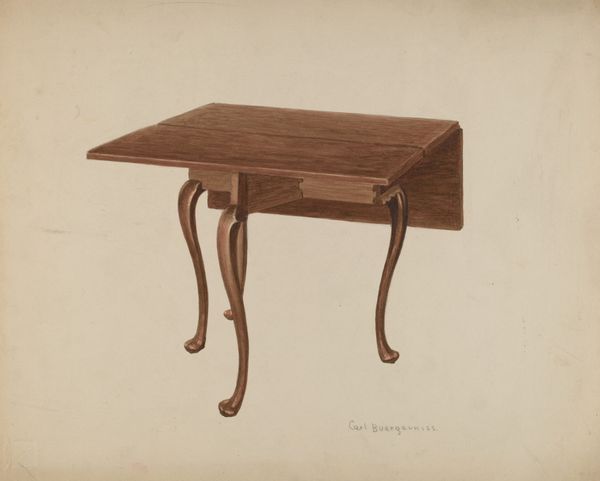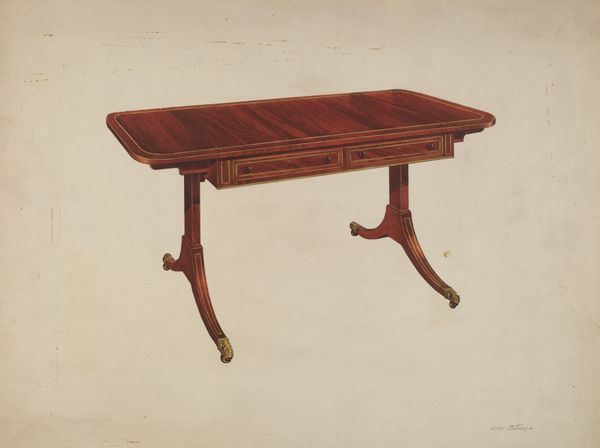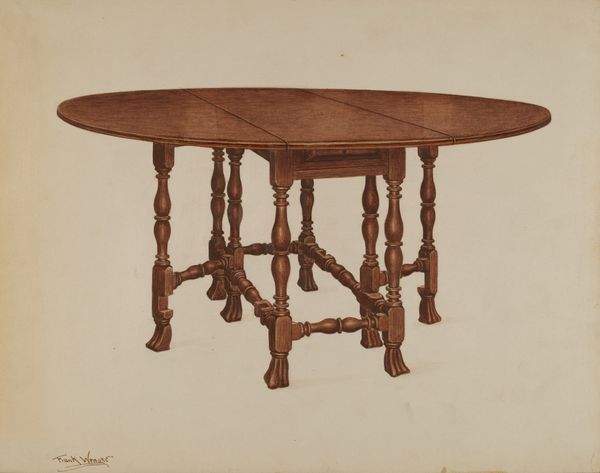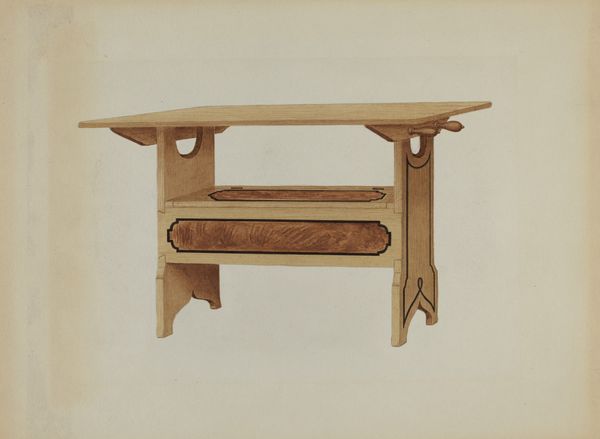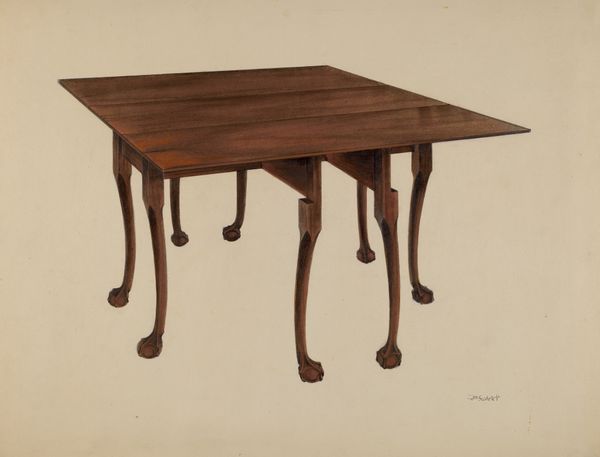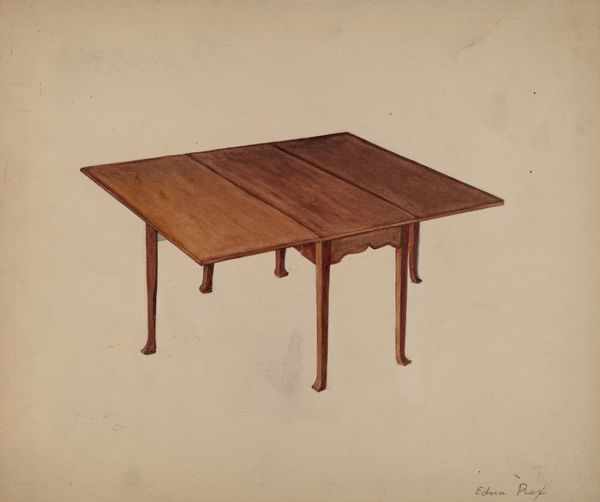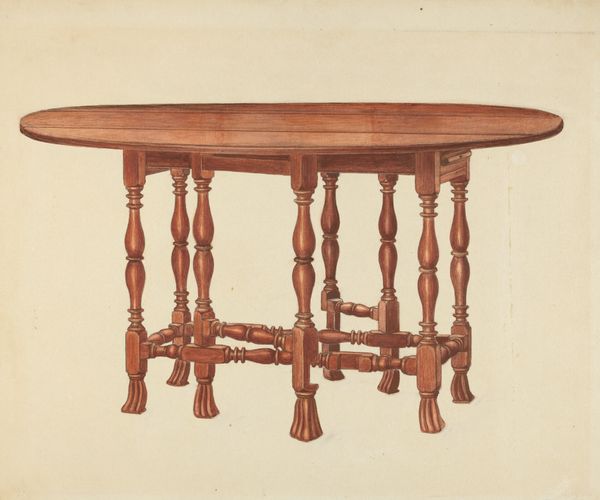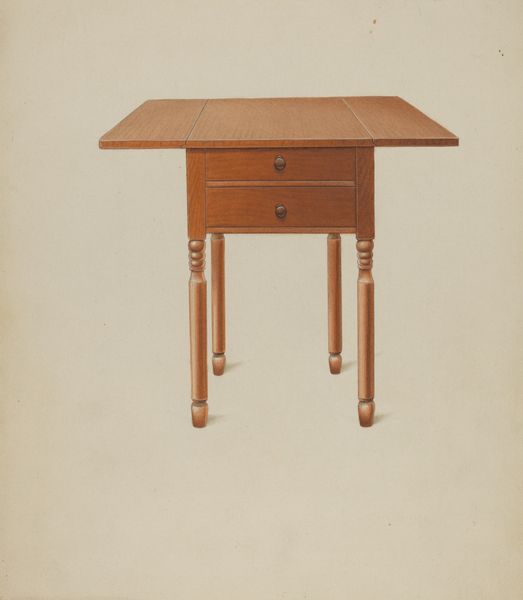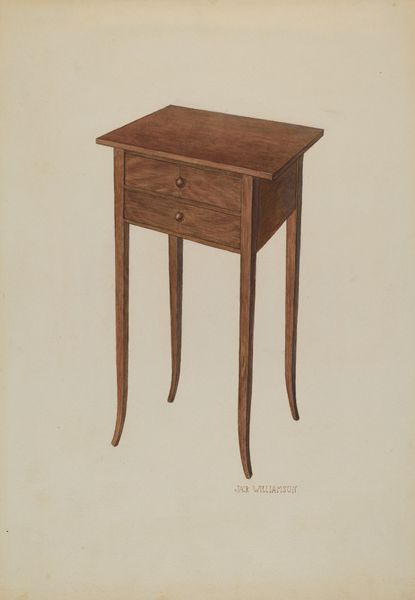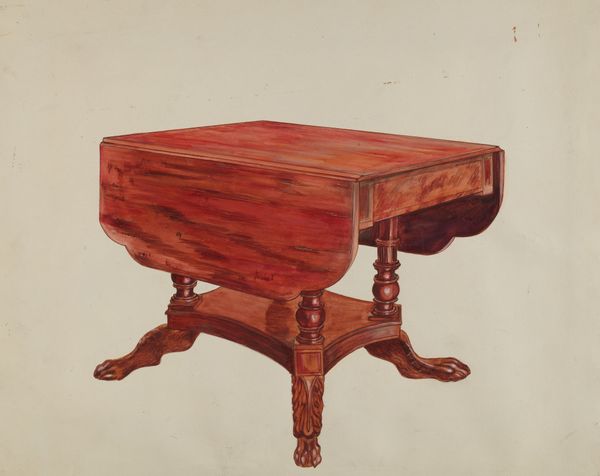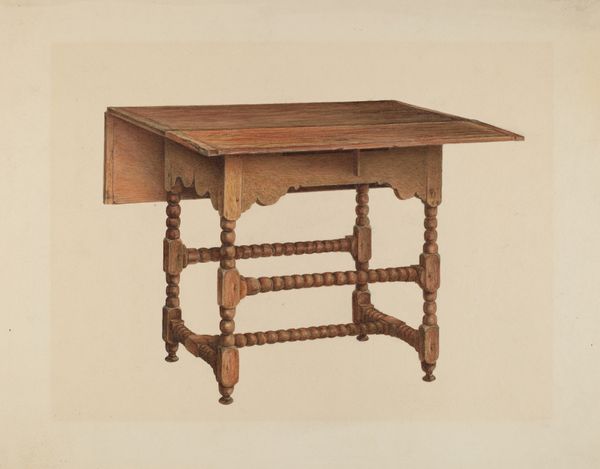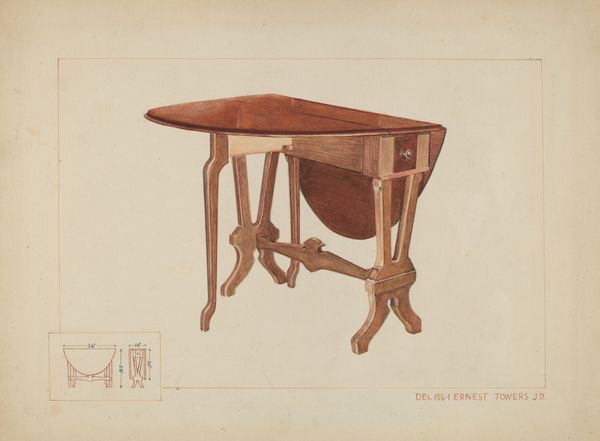
drawing, pencil
drawing
charcoal drawing
pencil
academic-art
watercolor
realism
Dimensions: overall: 45.5 x 54.7 cm (17 15/16 x 21 9/16 in.) Original IAD Object: 28 1/2"high; 32x32 inch top.
Copyright: National Gallery of Art: CC0 1.0
Curator: Today we're looking at "Table (pedestal)," a drawing created around 1940 by LeRoy Griffith. It appears to be rendered with pencil, charcoal, and watercolor. Editor: It feels so clinical! Like an architect's blueprint or a page ripped from a furniture catalog. Utilitarian, not particularly emotive at first glance. Curator: Exactly! The artist approaches the table with an academic precision, and, like those catalog renderings, Griffith isolates the subject to its structure. But consider the pedestal form itself—it is solid and geometric, yet supported on elegant castered feet. Doesn't that pairing hint at the merging of practicality and aspirational style? Editor: Mmm, maybe. For me, those casters whisper about its industrial lineage – metal hardware facilitating mass production and easy movement on the factory floor before finding its way into the domestic sphere. I see a functional object, carefully constructed with the appearance of solidity. But it's a rendering. We aren’t invited to touch and feel the grain of the wood or appreciate its joinery. Curator: True. But even this representation highlights societal ideals of domestic life, doesn’t it? The table becomes an object of status. The shadow it casts suggests the grounding necessary for intellectual discourse and sharing a meal together. Even the surface implies smooth exchanges, the negotiation of a home life. Editor: The table embodies this notion, certainly. It speaks to standardization in home furnishings, offering both efficiency and aesthetic appeal. This tension intrigues me most – art objects offering utility to life and symbolic value that also hints at how goods move within market contexts. Curator: And for me, this rendering transforms a humble object into a vessel carrying symbols of stability, status, and mid-century social aspirations. It becomes less about the object and more about the idea of “table”. Editor: A solid observation; looking closely changes one’s outlook.
Comments
No comments
Be the first to comment and join the conversation on the ultimate creative platform.
